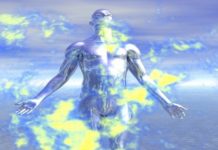Complexity of human brain is deeply discussed in our articles. We all know that the temporal lobe is responsible for interpreting sounds and the language we hear. Damage to the temporal lobe can lead to problems with memory, speech perception, and language skills. Also there are times when we are unable to know about the brain when a person in a coma. Also in case of dreams. Can these be interpreted in anyway? Well, science may have just found a way to do that.
Researchers analysing MRI images of the brain with an elegant mathematical model, found it is possible to reconstruct thoughts more accurately than ever before. In this way, researchers from Radboud University Nijmegen have succeeded in determining which letter a test subject was looking at. The research could be used to communicate with patients in comas or are in a vegetative state. The journal Neuroimage will publish the article. Functional MRI scanners have been used in cognition research primarily to determine which brain areas are active while test subjects perform a specific task.
According to lead scientist Marcel van Gerven, the model which was used for this experiment was given prior knowledge to what the letters look like. This was different from the previous attempt as in the earlier case the result was not a clear image, rather it was a somewhat unclear pattern. But after the model was given knowledge of the letters, it drastically improved the recognition of the letters. It must have behaved literally like an OCR software recognizes scanned images and matches the images similar to the stored letters. The result being the actual letter, a true reconstruction. Mr Gerven explains that this experiment is based on the concept that how our brain is able to recognize lines and curves as letters in a book only when we know how to read, similarly in the experiment the brain combines prior knowledge with the sensory information.
The scientists hope to make better improved models to an extent at which they will also be able to apply them in more realistic fashion and eventually try them in dreams or visualisations. The question is simple: is a particular brain region on or off? A research group at the Donders Institute for Brain, Cognition and Behaviour at Radboud University has gone a step ahead, in that they have used data from the scanner to determine what a test subject is looking at. The researchers ‘taught’ a model how small volumes of 2x2x2 mm from the brain scans – known as voxels – respond to individual pixels. By combining all the information about the pixels from the voxels, it became possible to reconstruct the image viewed by the subject.
Due to the higher resolution of the scanner, the researchers hope to be able to link the model to more detailed images. They are currently linking images of letters to 1200 voxels in the brain; with the more powerful scanner they will link images of faces to 15,000 voxels.
This should be counted as a big breakthrough in science and in the future it will surely help us understand, our own central processing unit (CPU), the most complex organ in our human body, the brain.



































